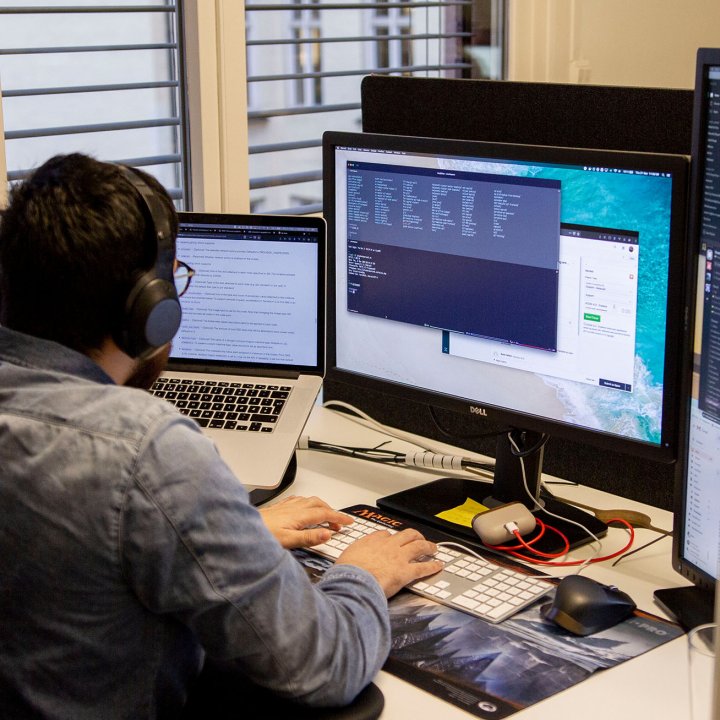Enonic technology: front-end & back-end
Learn more about the technological architecture of Enonic.

Learn more about the technological architecture of Enonic.
Enonic employees don’t have to contend with old legacy software. The Enonic platform, which was first launched in 2015, is using modern and innovative technology—assembled in new and exciting ways.
So what exactly does the technological architecture of Enonic look like? Let’s take a closer look at both the front-end and the back-end.
In regard to front-end technology, the Enonic team has developed a UI framework for building admin interfaces and extensions. Core apps include the CMS interface Content Studio and the user admin—actually one of the larger TypeScript projects on GitHub.
Admin extensions we have built include a Siteimprove integration, based on TypeScript and the Enonic UI framework. More of our applications and libraries can be found on Enonic Market.
Aiding us in our front-end projects are several technologies:
Mustache
Selenium
The Enonic team has developed a web application platform called Enonic XP, which includes back-end services like runtime, storage, CMS, authentication, admin tools, and Gradle plugins. Currently we are building the Experience Cloud, an Experience as a Service where customers can create, scale, and deliver digital experiences.
In back-end development the Enonic team uses the following technologies:
For more information, see licenses used by Enonic XP on GitHub. In addition, you can read more about the technological architecture in the blog post Enonic XP architecture unlocked.